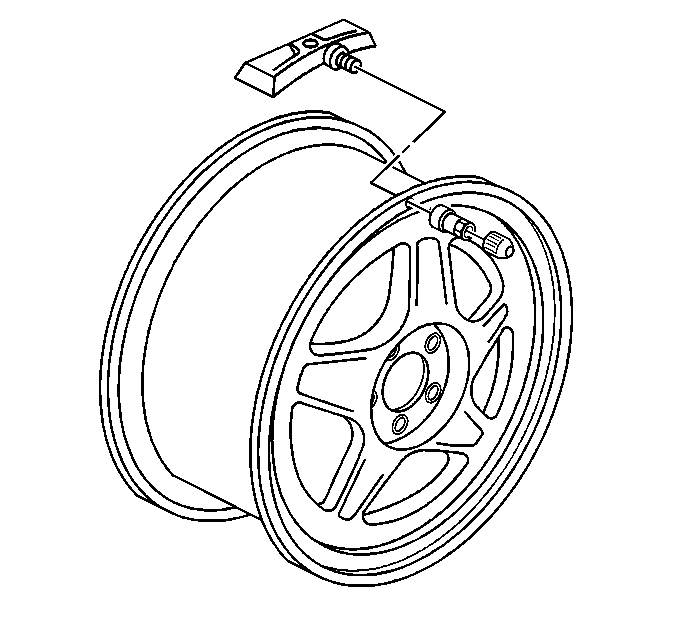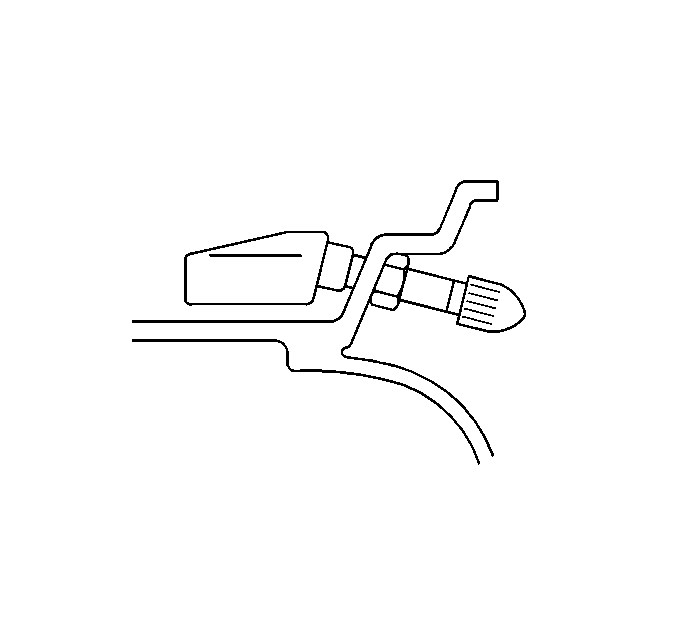Removal Procedure
- Raise the vehicle on a suitable support. Refer to Lifting and Jacking the Vehicle .
- Remove the tire/wheel assembly from the vehicle. Refer to Tire and Wheel Removal and Installation .
- Remove the tire from the wheel. Refer to Tire Dismounting and Mounting .
- Remove the tire pressure sensor nut.
- Remove the tire pressure sensor.
Important: Before the tire is removed from the wheel note the following items to avoid tire pressure sensor damage upon tire dismounting.
• Place the cap and the valve on a dry clean surface after removal, the cap is aluminum and the valve is nickel plated to prevent corrosion and are not to be substituted with a cap or valve made of any other material. • When using the tire machine to separate the tire bead from the wheel, position the bead breaking fixture 90 degrees from the valve stem. • When removing the tire from the wheel, ensure a tolerance is maintained between the tire machine fixture, or irons, tire bead, and the sensor.

Important: If any tire sealant is noted upon tire dismounting, remove all residual liquid sealant from the inside of the tire and wheel surfaces.
Installation Procedure
- Clean any dirt or debris from the sensor grommet sealing area of the wheel.
- Insert the sensor in the valve stem hole with the air passage facing away from the wheel.
- Install the sensor nut and position the sensor body parallel to the inside wheel surface while torquing.
- Install the tire on the wheel. Refer to Tire Dismounting and Mounting .
- Install the tire/wheel assembly on the vehicle. Refer to Tire and Wheel Removal and Installation .
- Lower the vehicle.
- Learn the tire pressure sensors. Refer to Tire Pressure Sensor Learn .

Notice: Use the correct fastener in the correct location. Replacement fasteners must be the correct part number for that application. Fasteners requiring replacement or fasteners requiring the use of thread locking compound or sealant are identified in the service procedure. Do not use paints, lubricants, or corrosion inhibitors on fasteners or fastener joint surfaces unless specified. These coatings affect fastener torque and joint clamping force and may damage the fastener. Use the correct tightening sequence and specifications when installing fasteners in order to avoid damage to parts and systems.
Tighten
Tighten the nut to 7 N·m (62 lb in).
Important: To avoid tire pressure sensor damage when mounting the tire back on the wheel, ensure a tolerance is maintained between the tire machine, or irons, tire bead, and the sensor.
